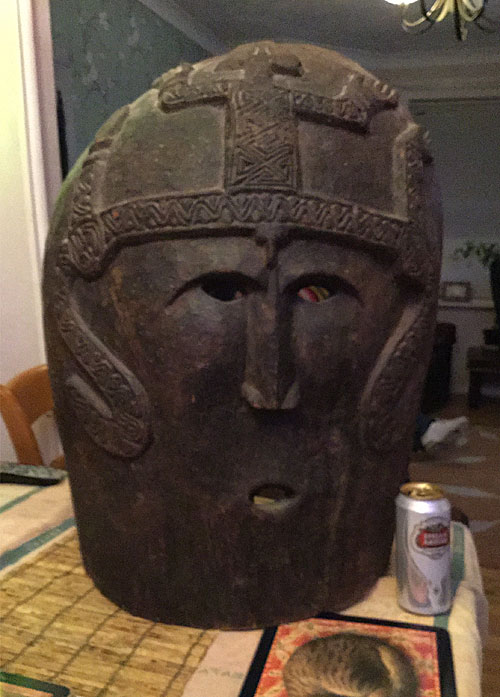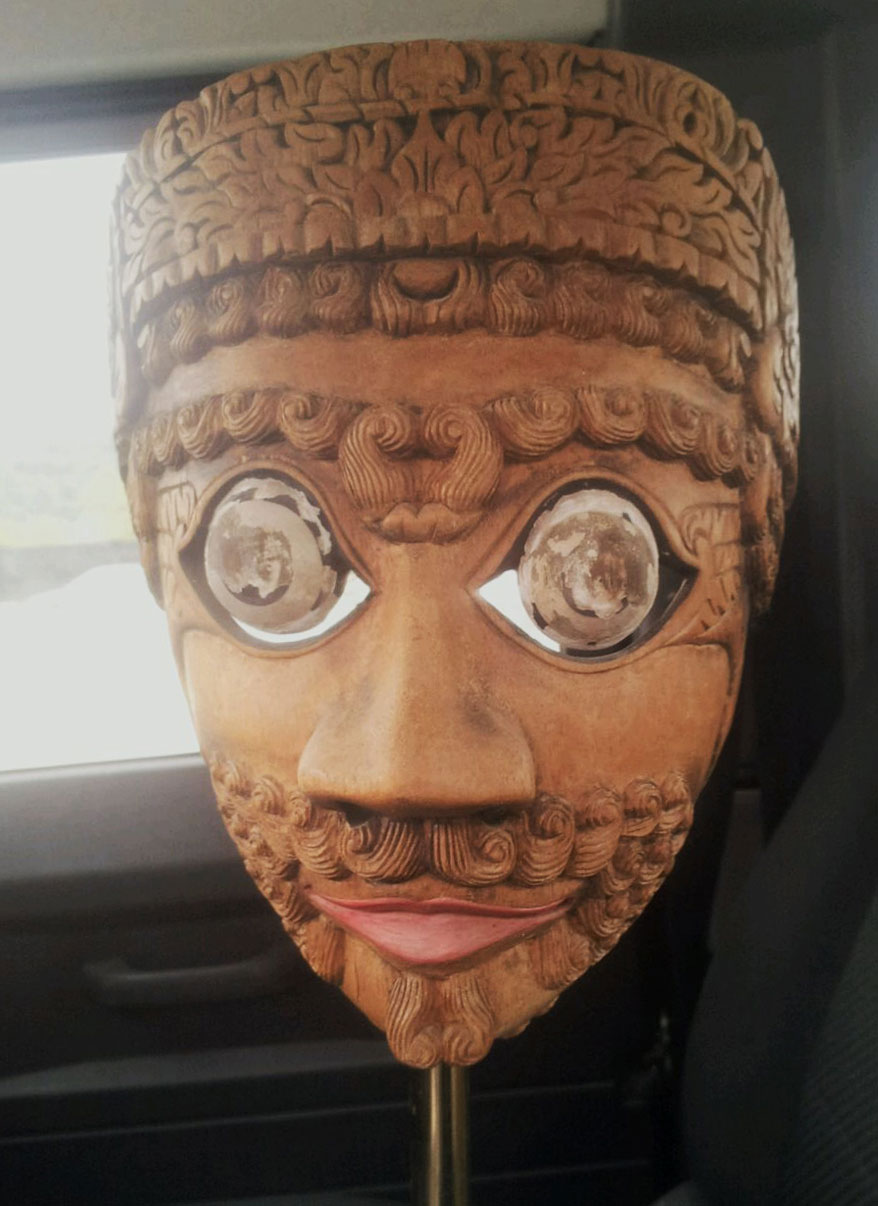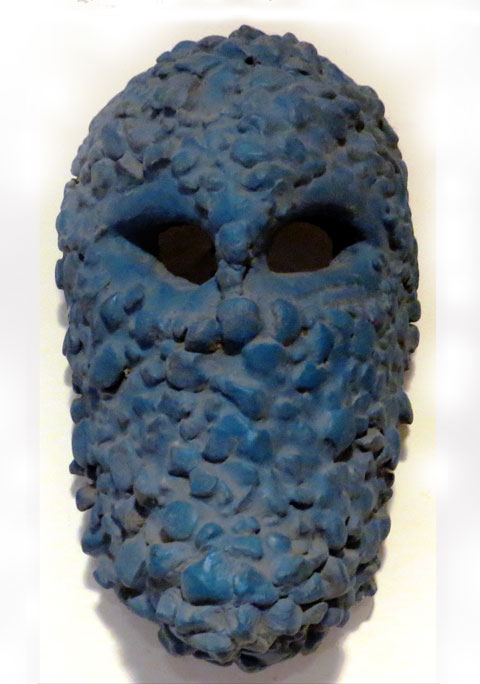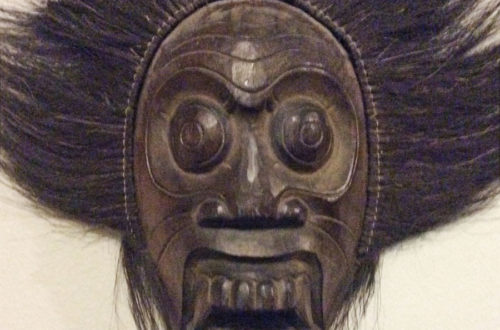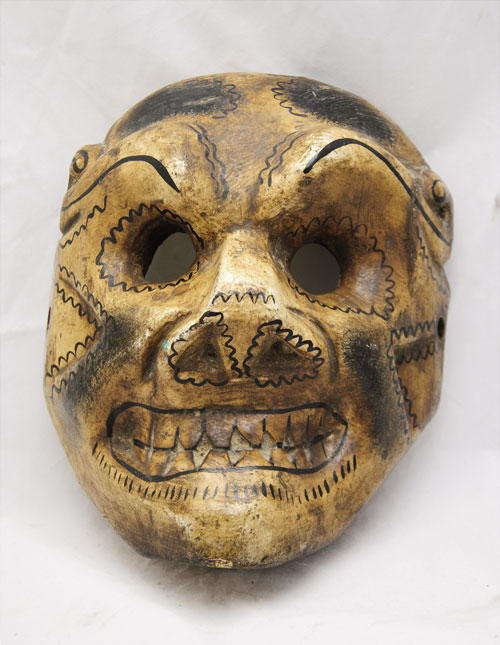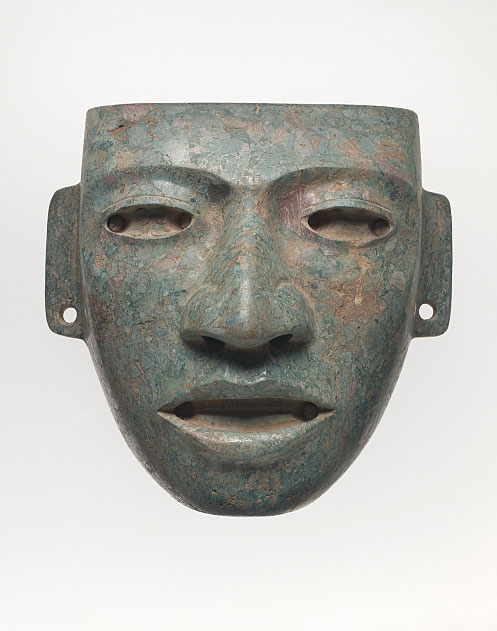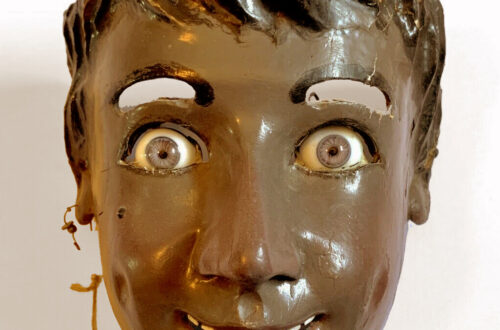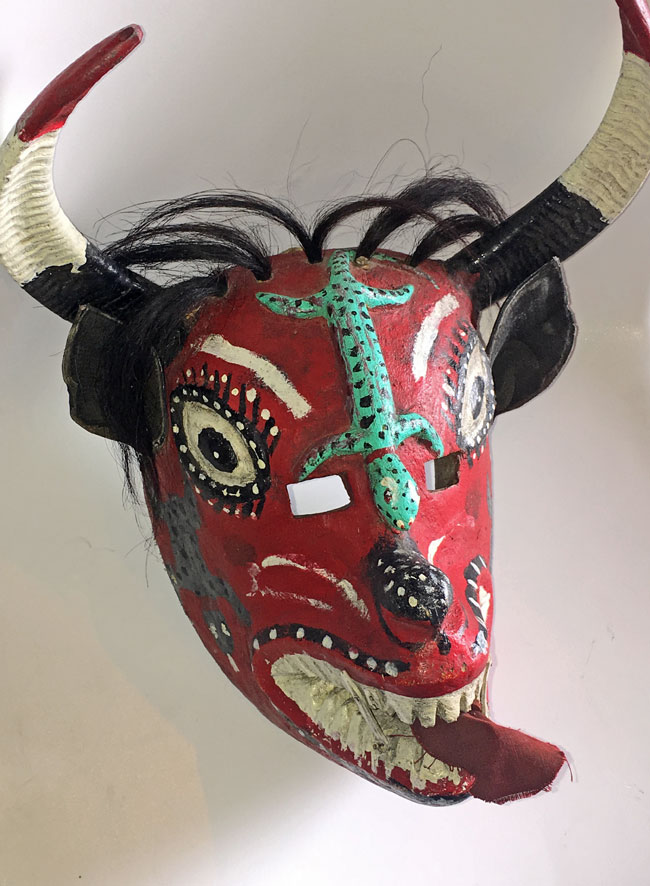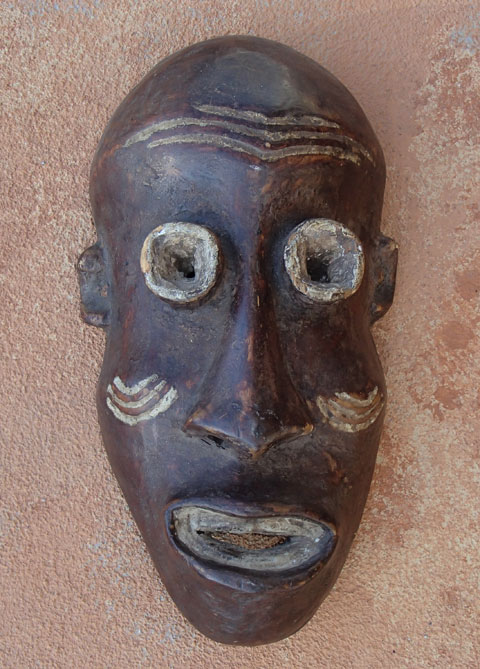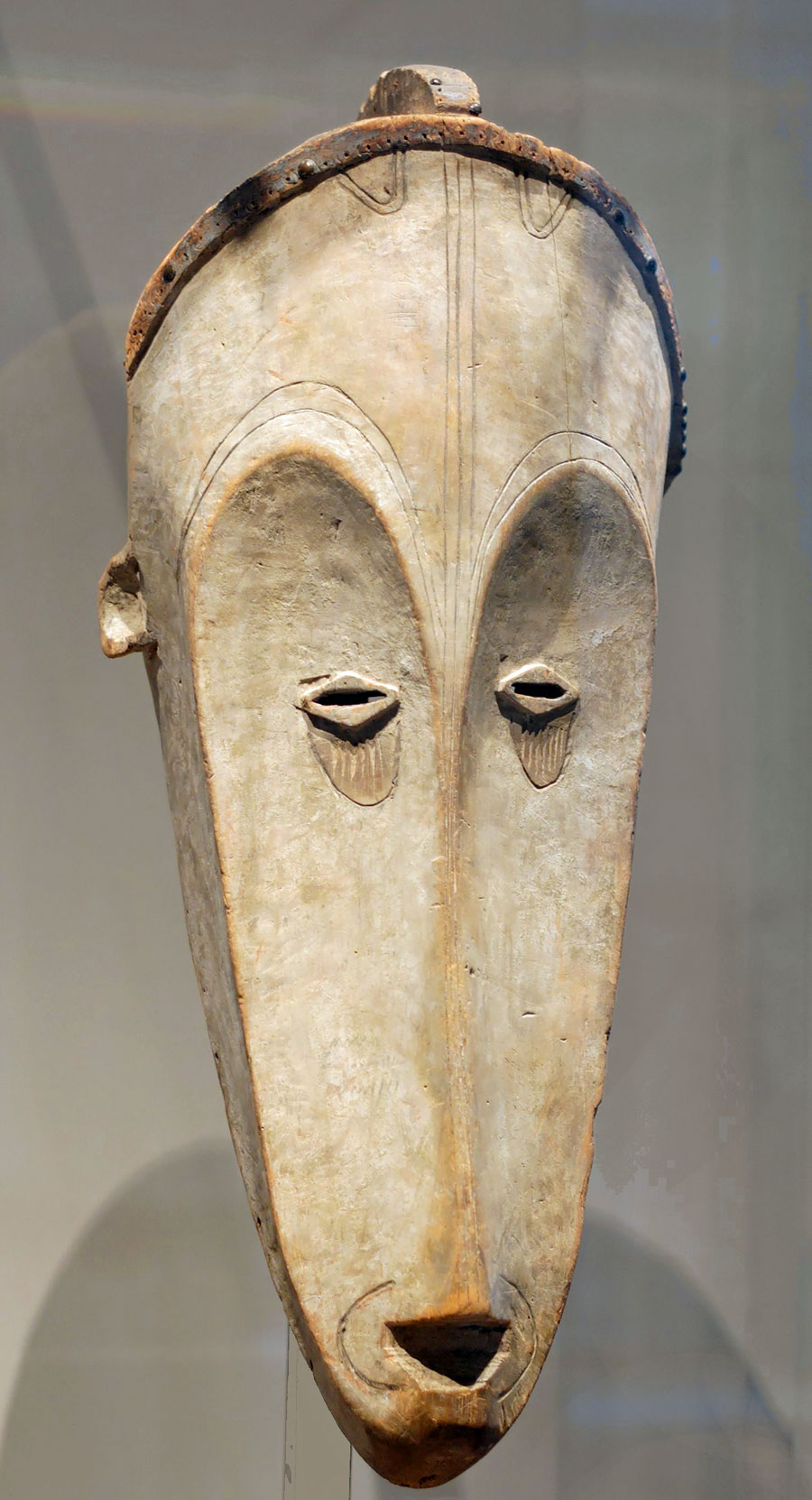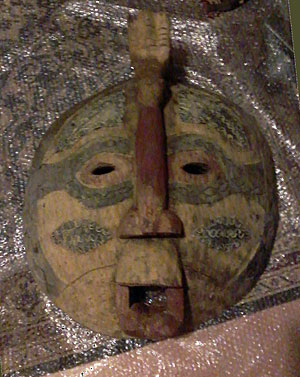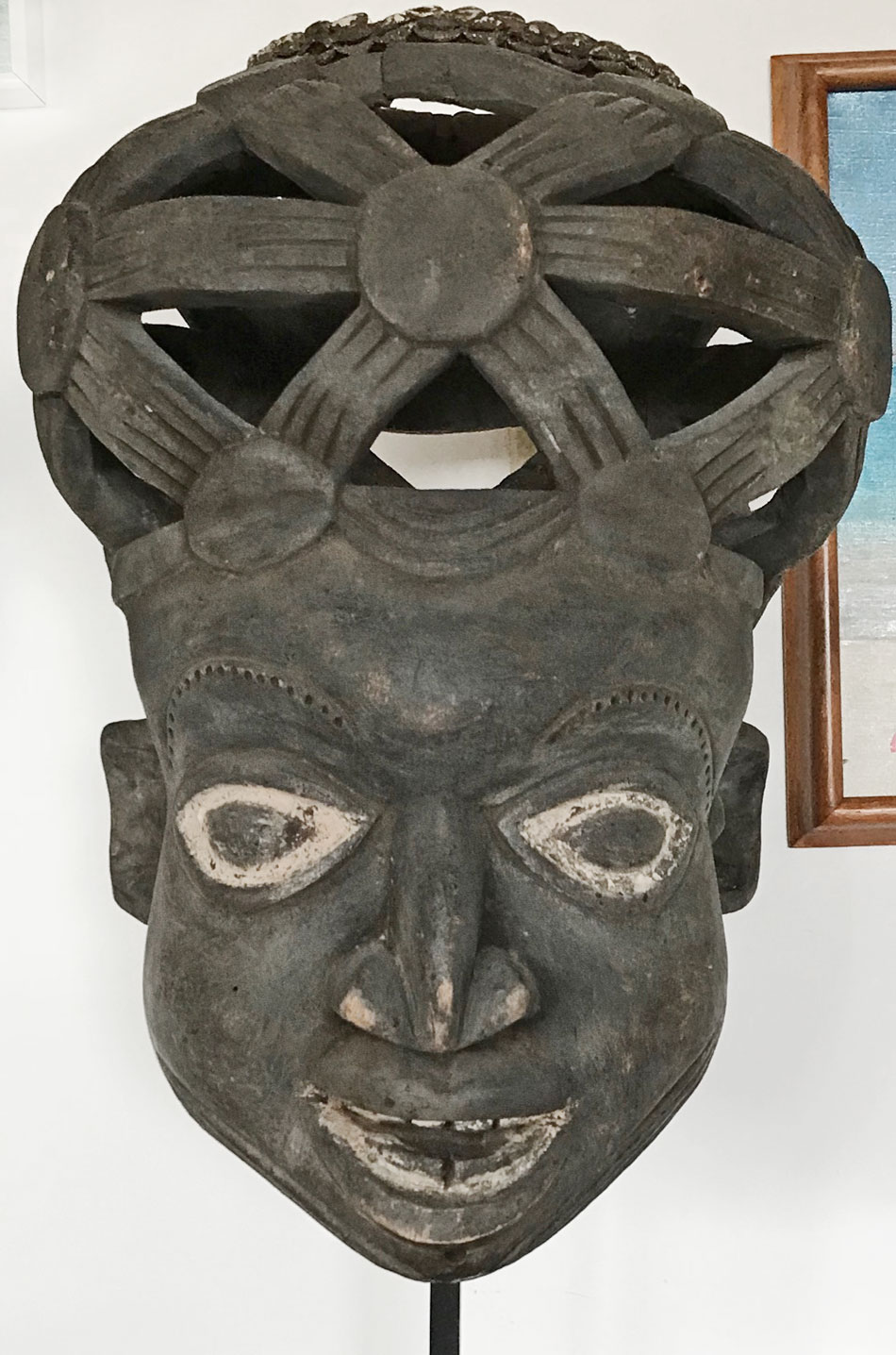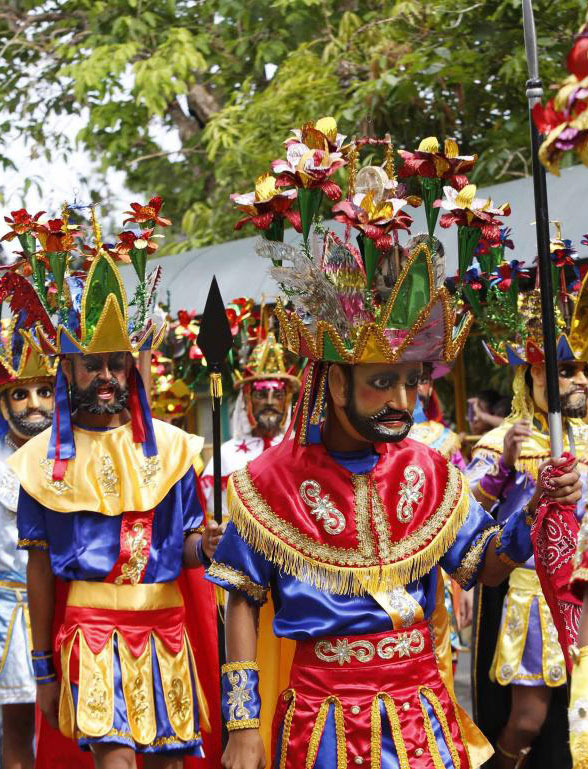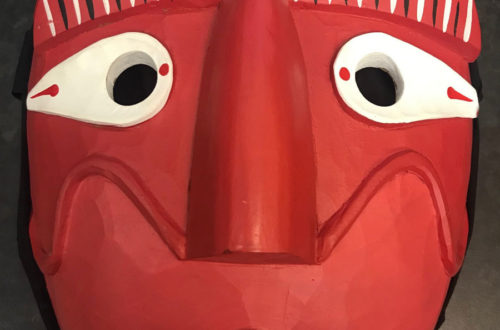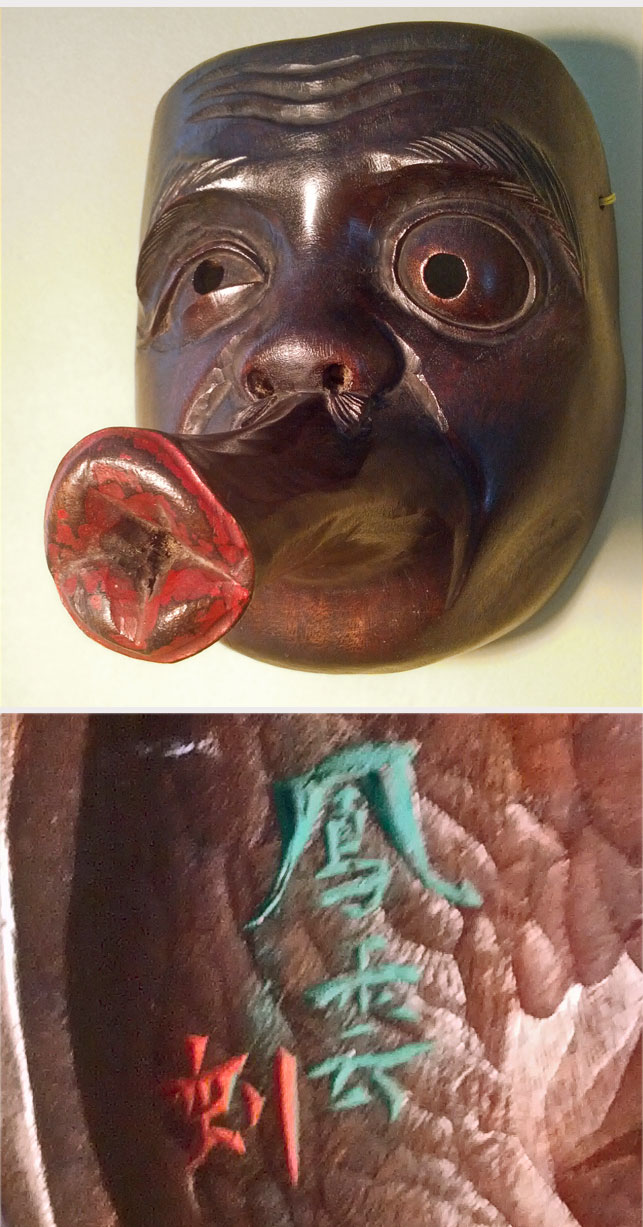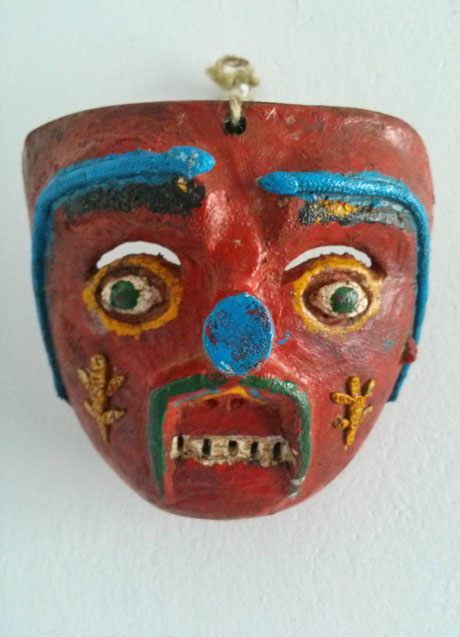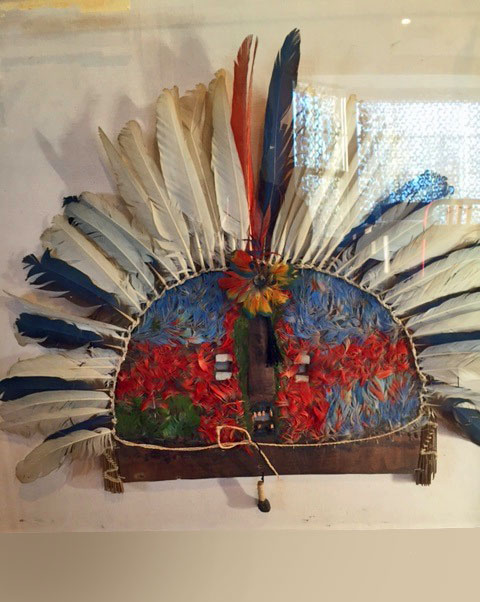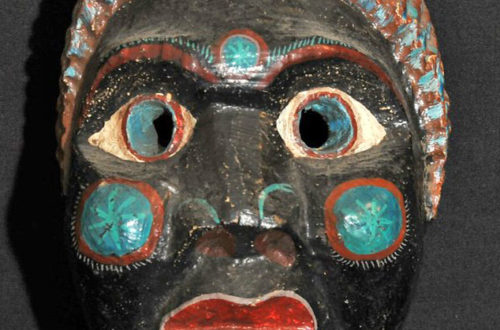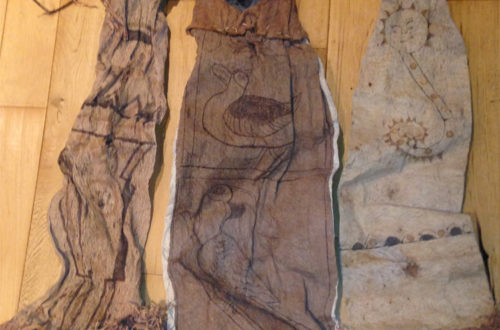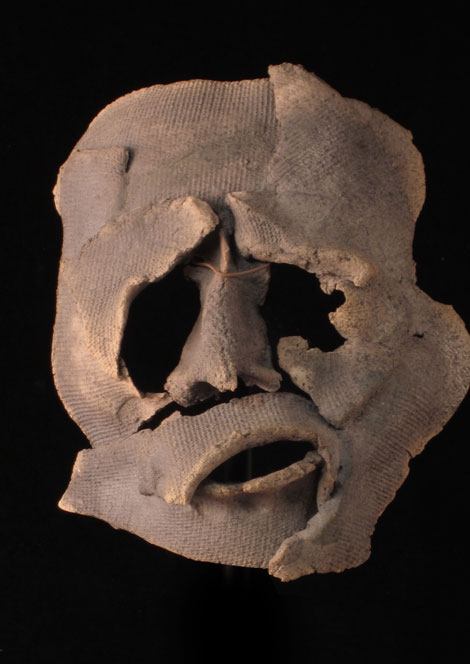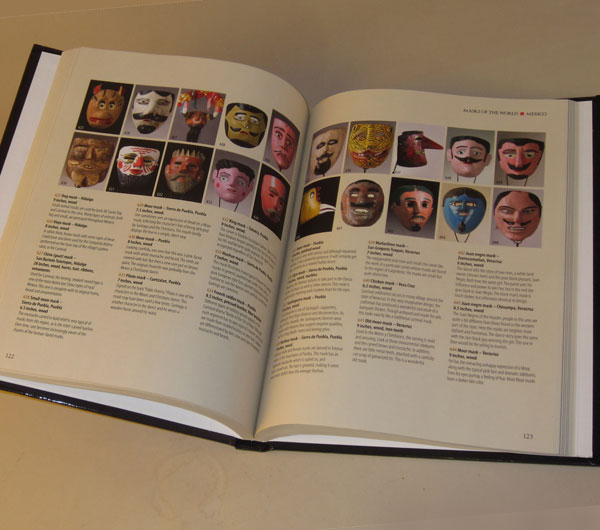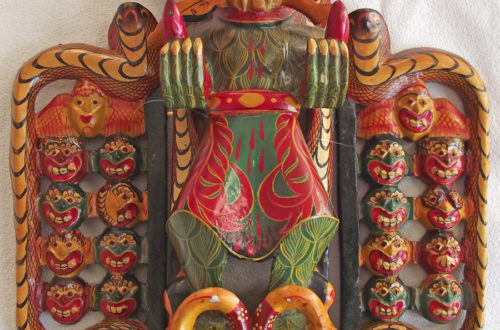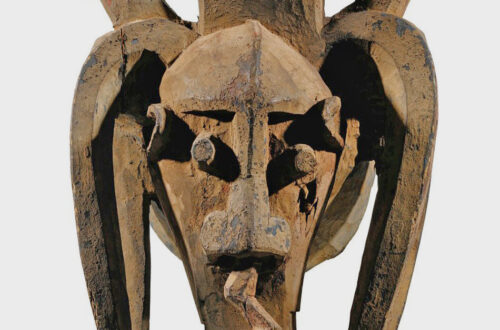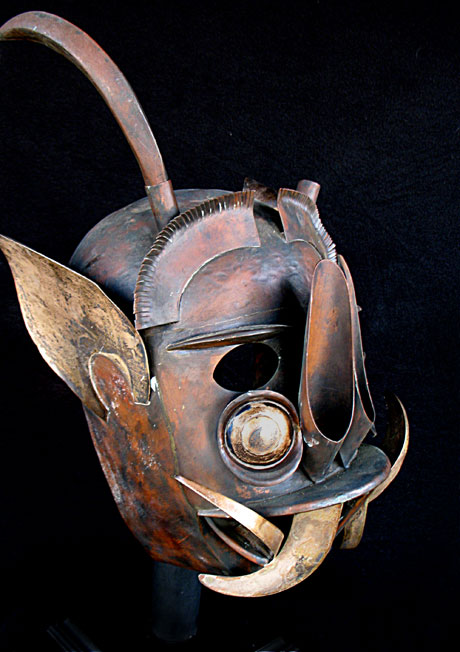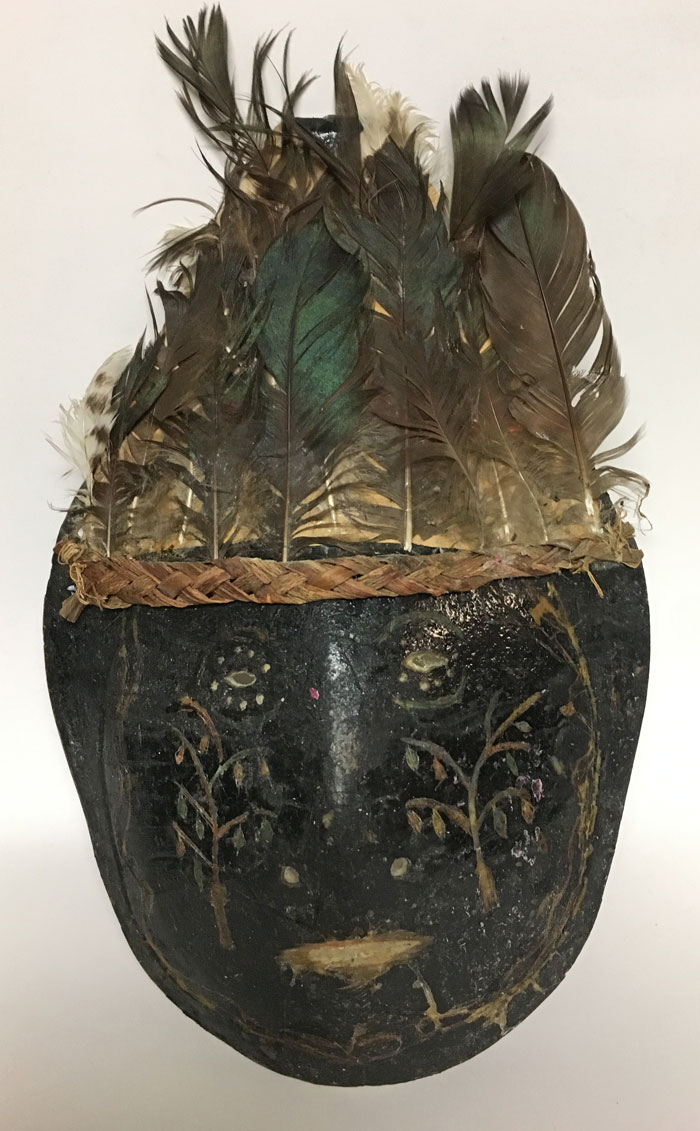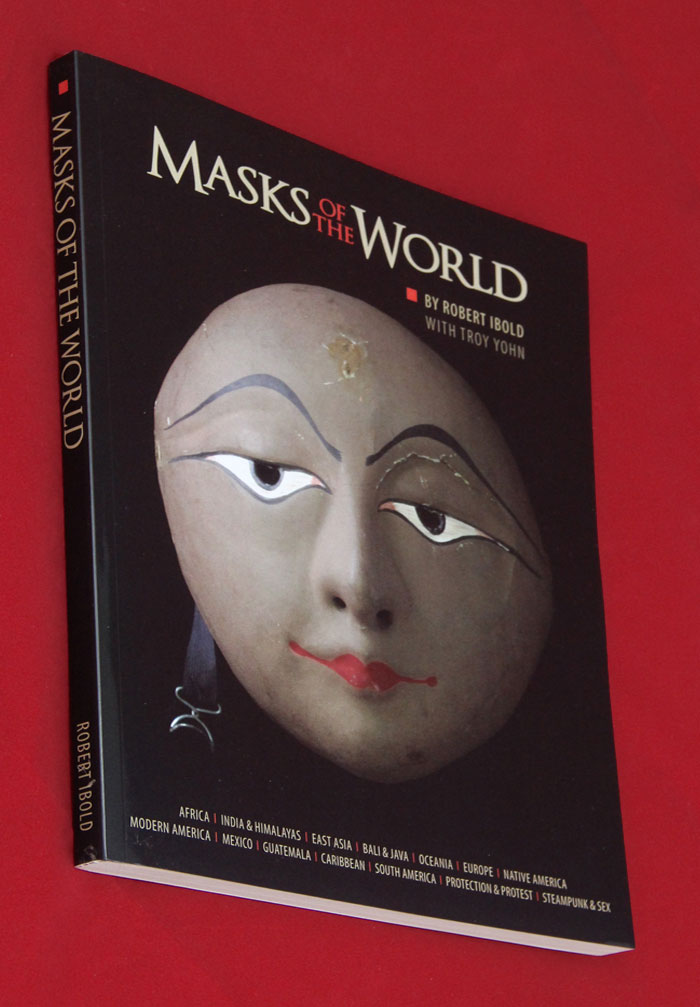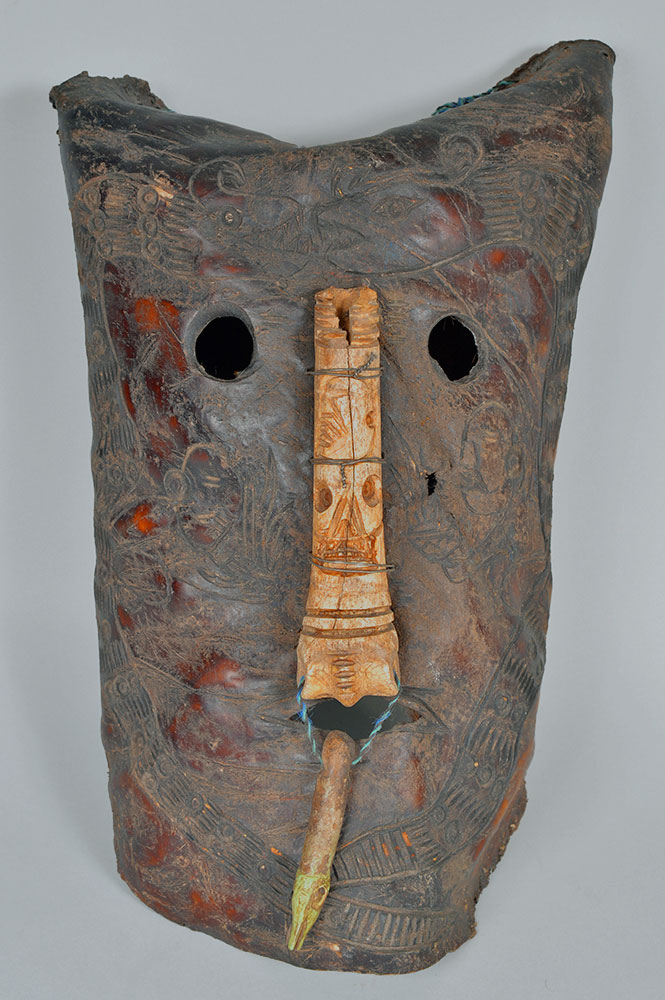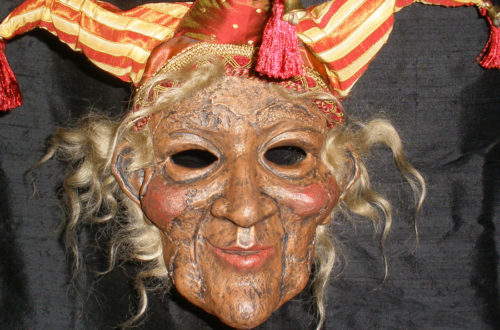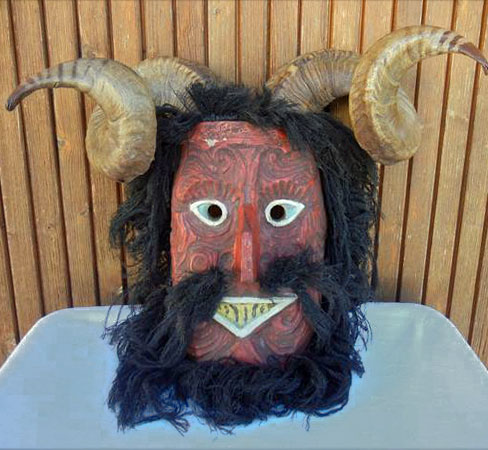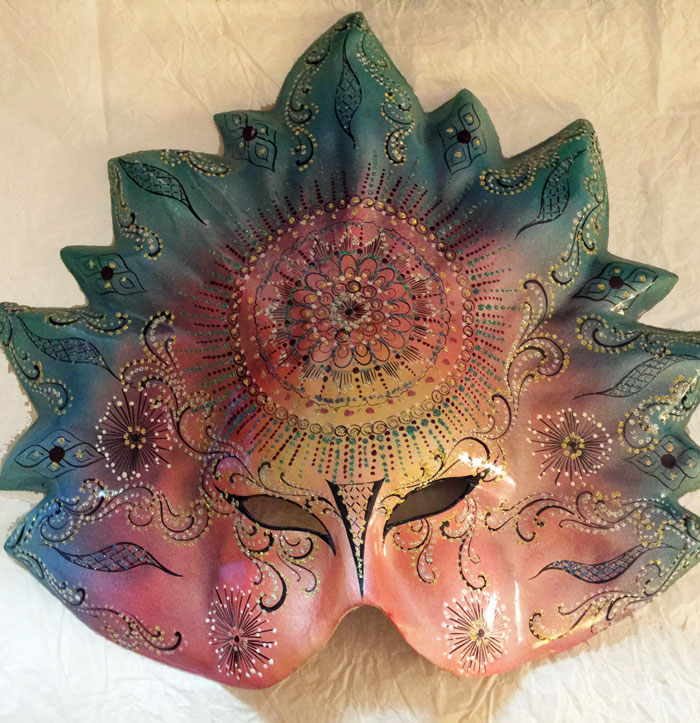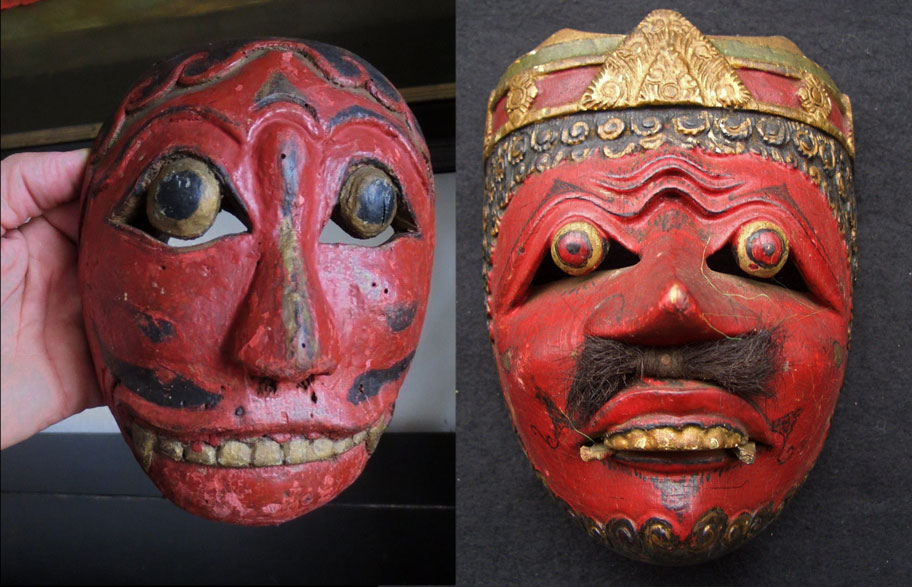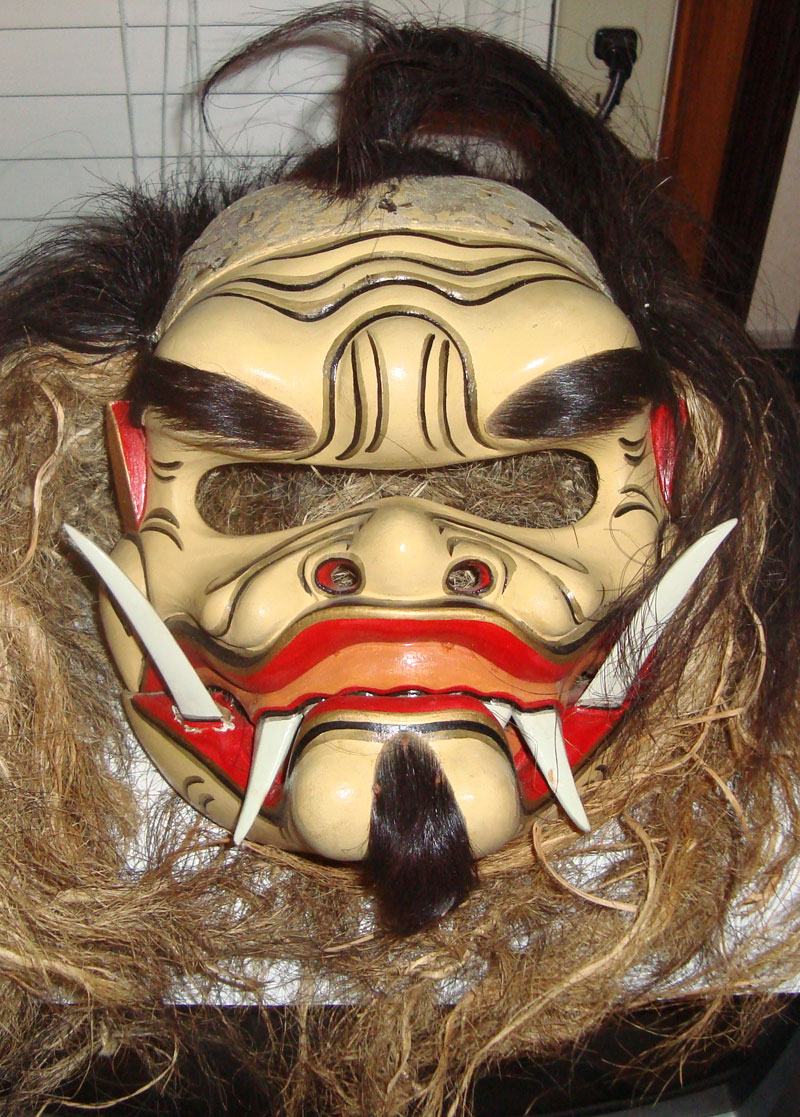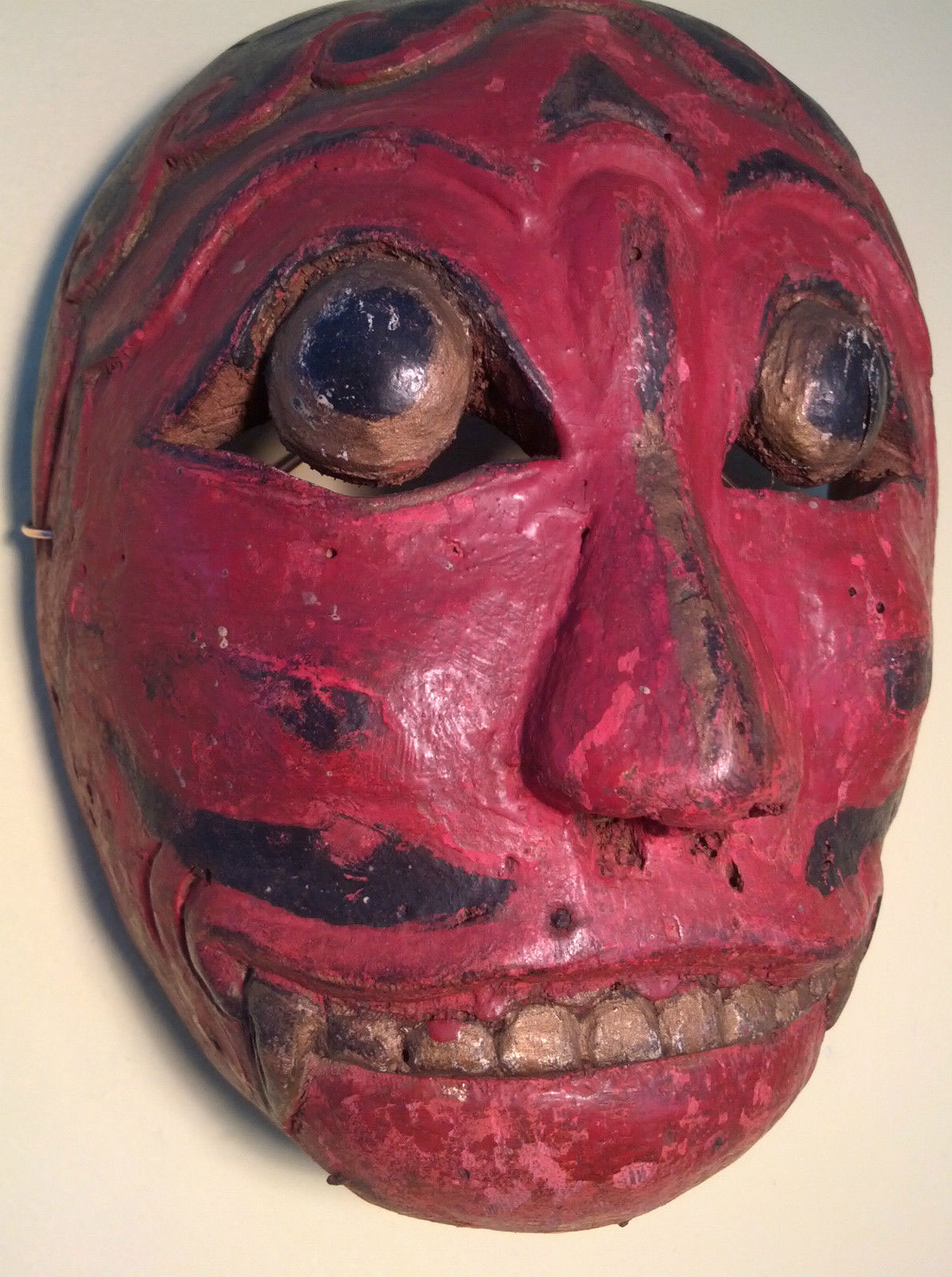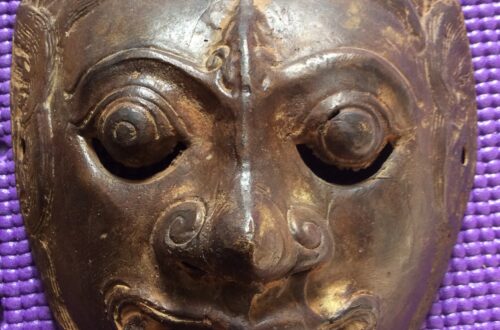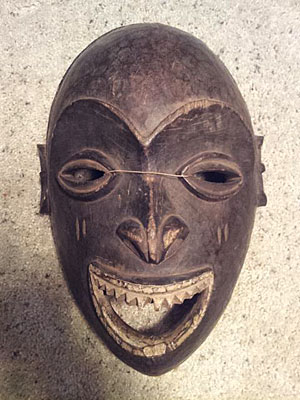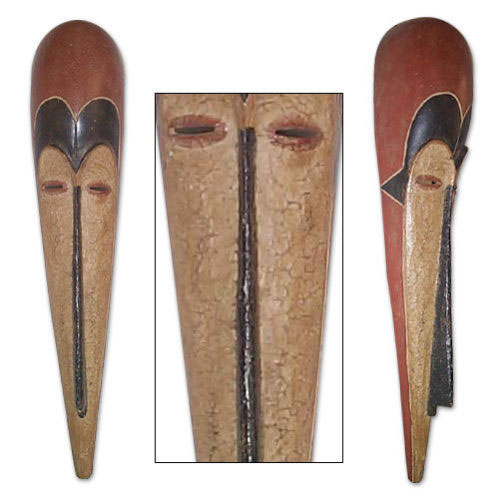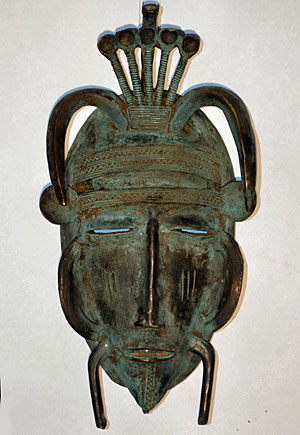Q: I’ve had it about 25 years. It came from a guy who used to import furniture from Thailand and he just acquired it from some locals who got it many years earlier from a temple that was destroyed by fire. Whether or not that’s just a salesman patter or quite feasible– who knows? But I’ve looked through the net and haven’t got any more of a clue of what it is. It’s approx 32 by 19 inches and of heavy darkish wood. If you could shed some light on it I would be very grateful. Alex, 730 A: I haven’t seen a Thai mask like this.
-
-
Day of the Dead mask
Q: I purchased this mask at a rummage hall that deals in storage unit clean-outs. I like detail and scary images. I had a friend who works with Pacific northwest wood look at it and she couldn’t identify the type, just that it was really old. Dimensions are approx 8L” x 7.75W”x 4.75H” and the weight is 153g. Any information you provide would be wonderful. At this point I am clueless where to start looking. Darrel, 729 B: It is a Mexican Day of the Dead mask that could be used to celebrate that very important holiday.
-
To collect or not to collect
Q: This mask from Africa is at least 50 years old. I do not know more about it … bought it 20 years ago in a garage sale. I’m not a collector of masks. Thanks. Louise, 728 A: Thanks for the excellent photos. The mask is from somewhere in West African. It was designed with a combination of references to various cultural traditions… then made to look used and old.
-
The Spanish influence
Q: Have you ever seen the christian based, roman soldier masks of the Philippines Holy Week celebrations? Pretty interesting… these are large, hollowed, helmet-masks that they wear. Nate, 727 A: Yes, I think they are interesting as well. Called Morones, they are only found on the small island of Marinduque just south of the big island of Luzon.
-
Old Peru wood mask
Q: What are your thoughts on this mask from Peru? Wood, chiseling, and depth all seem rather unique and not similar to what I normally see in other countries. I am surprised to think Peru has animals on the front of their masks like Mexican masks might. This one is claimed to be from the 1850s, but nothing about the string, or patina on the mask would attest to this. Does not seem like its a used mask, or an antique. Nate, 726 A: Nate, I’m amazed at how you continue to find interesting masks.
-
Masks as art
This wonderful clay mask was done by my friend, Scott Paden, when he was an art student. (Today, many years later, he is Director of Preservation for OLBN, an architectural firm with offices in DC, New York and Beijing.) 725 Masks are a combination of sculpture and painting. Art teachers know that and will often assign masks as a class project that integrates social studies, literature, history and religion, and introduces the students to new materials such as papier mache, plaster, clay, metal, wood, etc. It can be a delight to see the results of these student efforts.
-
Heavy Metal Mystery
Q: I recently purchased this copper mask online and was wondering what your thoughts regarding country of origin might be. It’s very well made and could easily be worn by an adult, though it’s fairly heavy. It’s similar in construction to the tin Bolivian masks I own, but not quite the same stylistically. Possibly Mexican or Peruvian? I’m hoping one of your dedicated followers may have some insight. Thanks, Dan, 724 A: That’s a hum dinger of a mask!
-
Interesting Sardinian mask
Q: This unusual mask was a total mystery when I bought it, but now I would like to share it with you and your visitors. I got it for some 70 usd at a thrift shop. It had a tag with a telephone number and said ‘Bottega Artigiana per lo studio delle arti popolari’, and there is a logo branded in the inside. It was made by Gian Pietro Angelo in the town of Macomer on the island of Sardinia, Italy. I guess it is of Mediterranean pine tree, and has a bright red water color with dark varnish, which gives the mask an incredibly gloomy red color.
-
Javanese masks
Q: I have two similar, but different red Topeng masks that look to be authentic, used, ethnographic items. Are they the same character? It seems as if they might be, but if so, why the differences? Is it due to their disparities in age or from the original locations? Thanks, Nate, 722 A: The Mystery Mask blog is restricted to one mask per person, but I will make an exception with these two.
-
Happy New Year
This charming photo by Phyllis Galembo is called Four Children in Fancy Dress. It shows a Nobles Masquerade Group from Winneba, Ghana, taken in 2009. It comes from Maske, a book by the photographer that shows all sorts of African masks and costumes. You should treat yourself to this beautiful book. It is in print and not expensive. Best wishes to all, Bob, 721
